#19th-century attire
Explore tagged Tumblr posts
Photo

"The Drinkers" (1890) by Vincent Van Gogh - Four men in top hats share a drink, their features swirling in Van Gogh's signature style.
#painting#1890s#blue#vincent van gogh#1890#gray#post-impressionism#figurative#van gogh#exaggerated features#19th-century attire#green
59 notes
·
View notes
Text

Picnicking ensemble, circa 1895
FIDM Museum Sporting Fashion Introduction
#this is what I look like on the inside#truly#I love EVERYTHING about this attire#the hat? gorgeous#the dress and the polka dots? wow wow wow#the picnic tin? pack two of them#victorian#victorian era#victorian fashion#19th century#fashion history#historical fashion
797 notes
·
View notes
Text
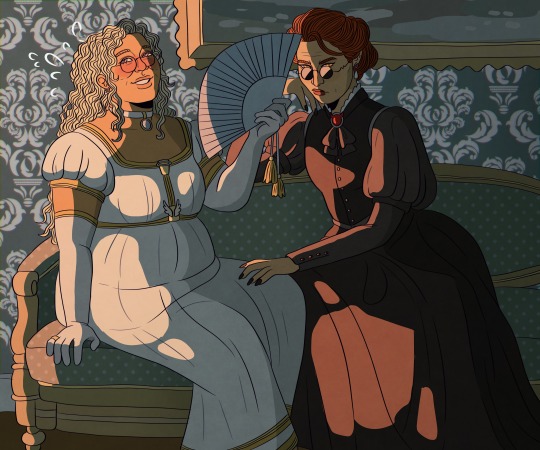
a clandestine meeting interrupted c. 1861. the ladies crowley and fell found conversing unattended in the parlour without chaperone nor candlelight, who both seemed flushed and annoyed to be found out by other party attendants
🖼️ kofi link in bio if you’re feeling generous 🖼️
#my art#good omens#ineffable wives#aziraphale#crowley#HC that even tho its the 19th century az is always behind the fashion trends#so shes in regency attire#whereas#crowley has adopted mourning attire to be more edgy#az thought they were having a Moment which is why shes flustered
901 notes
·
View notes
Text
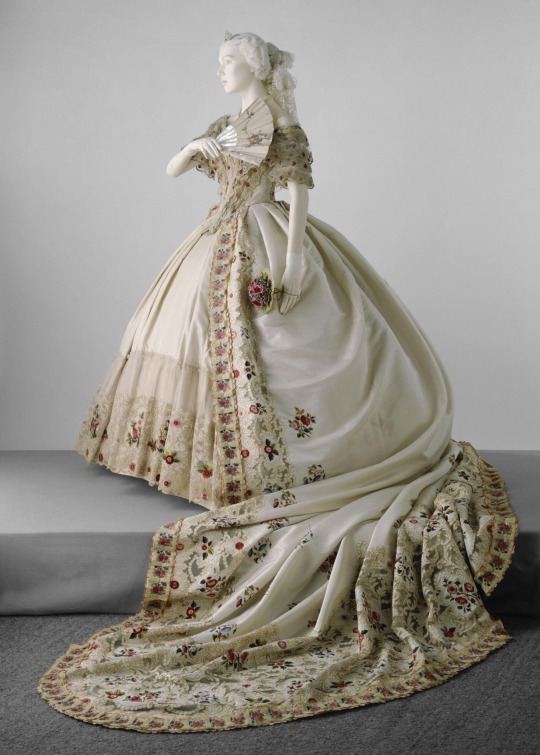
White floral court dress, 1860-1865, British.
Victoria and Albert Museum.
#womenswear#extant garments#dress#silk#court dress#court attire#1860#1860s#1860s dress#1860s extant garment#v&a#19th century#Britain#1860s Britain#white#floral
369 notes
·
View notes
Text

In the Garden
Artist: Edouard Manet (French, 1832–1883)
Date: 1870
Medium: Oil on canvas
Collection: Metropolitan Museum of Art, New York City, NY, United States
#painting#family#genre art#garden#baby#man#woman#flowers#baby carrier#french culture#path#oil on canvas#artwork#french art#attire#costume#white dress#oil painting#fine art#french painter#edouard manet#19th century painting#european art#metropolitan museum of art
23 notes
·
View notes
Text
Festooned in Flowers: A Victorian Fashion Trend of the 1870s and 1880s
Artificial flowers are much used both for hair ornaments and as trimming on the gown – the largest size roses possible made of silk or velvet in black, white, or different colors with the dewdrop effect of rhinestones or diamonds. – Vogue, 1901
Some dresses, such as the gown below, were trimmed with elaborate garlands of flowers.
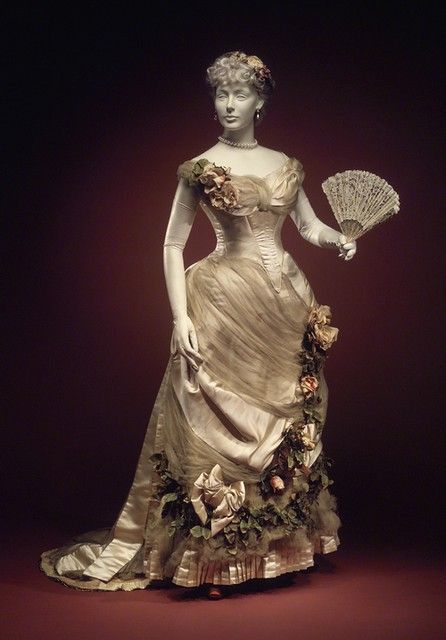
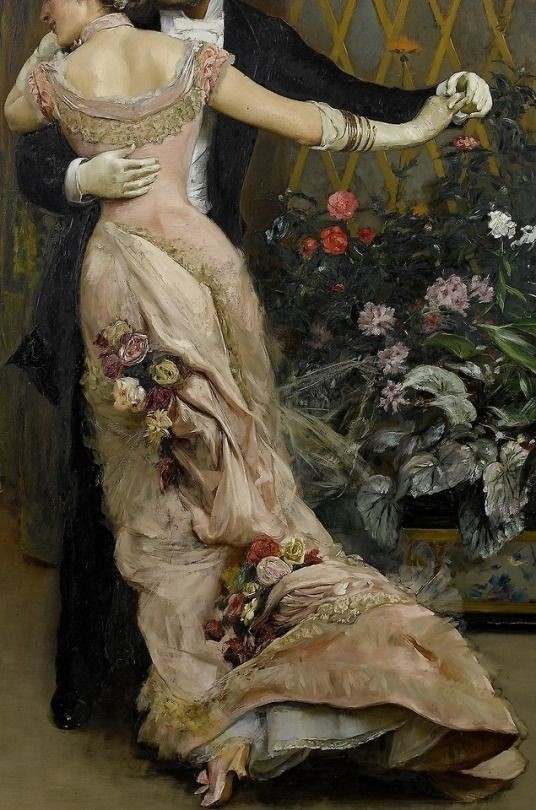
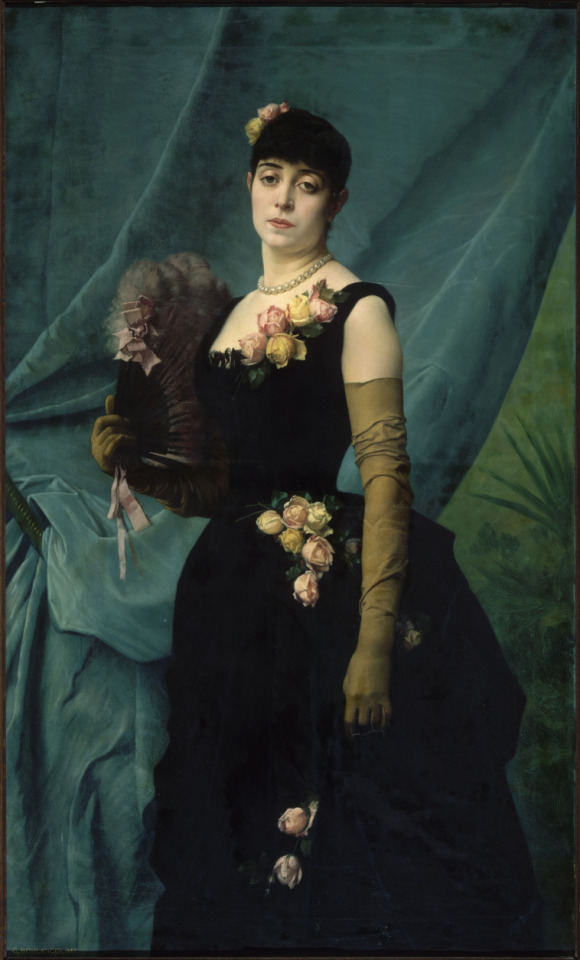
Right: Gustave Boulanger (French, Portrait de Madame Lambinet, née Nathalie Sinclair • 1887 • Musée Lambinet, Versailles
Left: Rogelio de Egusquiza y Barrena (Spanish, 1845-1915) • The End of the Ball • 1879
Flower garlands appeared draped over the entire gown, or just the skirt of a gown. Flower clusters were also popular on the shoulder, the middle of the neckline, and on a strategic placement where the fabric was gathered. Sometimes it seems they were used everywhere at once.
The Art of Dressing Well. A Complete Guide to Economy, Style and Propriety,��published in 1870 advises:
“Yet, even in the full dress requisite for evening parties, the rule should be to dress well, becomingly, and appropriately, but not obtrusive, and above all, not gaudily, or too much. It is a crime against good taste to be too much in excess of the company, yet care must be bestowed upon the costume, the hostess expects it, and the guests observe its neglect. It is the test of good taste to be in the foremost rank of guests for appropriate dress, but never in advance of others."
Hmmm...it seems to me through today's lens that the antique gown in the photo above is "too much".
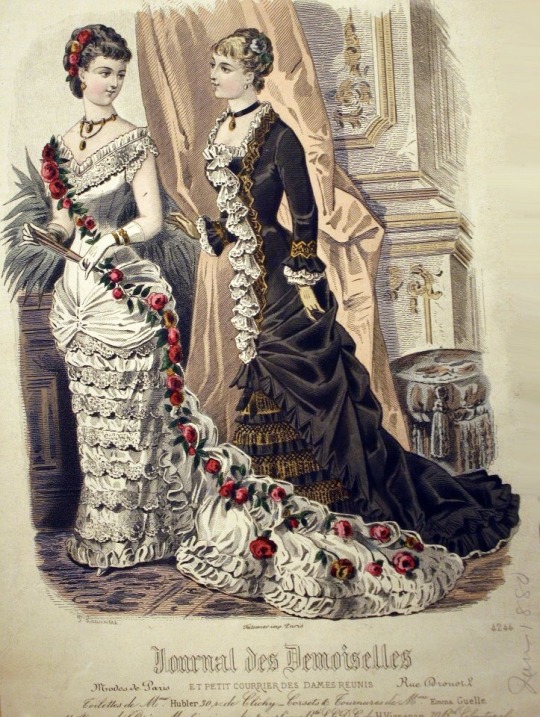
Short, or what we now call cap sleeves, were essential for formal evening wear in any season, as were sleeveless dresses. Off-the-shoulder and low-necklines were also very popular.
Glittering jewelry was often worn – necklaces in double-strands, dangle earrings, bracelets, and pearls. Some fashion plates and gowns in museums show women wearing a thin velvet ribbon around the neck.
Long gloves were a must. Hats were not considered appropriate in formal wear but fancy comb and pins were. As stated above, fabric flowers were also often used to decorate hairstyles that were mostly up-dos. Feathers were sometimes also tucked into the hair. Some hairstyles were very elaborate. And then there is the ubiquitous fan; either held closed or open to show off a special design.
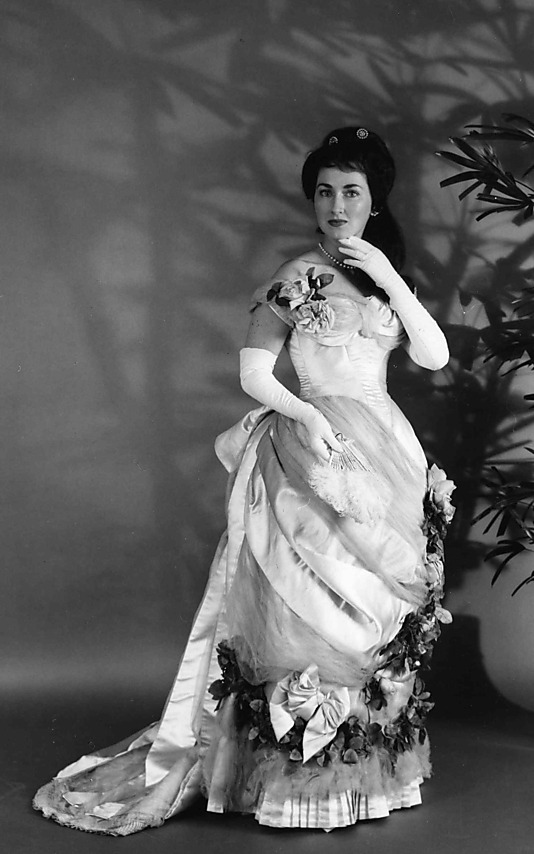
#fashion history#women's fashion history#victorian fashion#victorian fashion plates#victorian formal attire#ball gowns#victorian flower decorated gowns#history of fashion#the resplendent outfit art & fashion blog#gustave courbet#rogelio de egusquiza y barrena#victorian art#art#art history#french artist#genre painting#19th century european art#painting
123 notes
·
View notes
Text

Sir Daniel Gooch, 1st Bt
Artist: Francis Grant (Scottish, 1803–1878)
Date: 1872
Medium: Oil on canvas
Collection: National Portrait Gallery, London
Description
Railway engineer; appointed by Brunel locomotive superintendent of the Great Western Railway; designed the best locomotives of the period; in 1865 became Chairman of the GWR and rescued it from bankruptcy; severe and puritanical in character, but Brunel's closest supporter and friend.
#portrait#painting#sir daniel gooch#scottish culture#man#three quarter length#seated#interior scene#scottish painter#artwork#oil on canvas#fine art#oil painting#red leather chair#dog#document#window#landscape#railway engineer#scottish art#red curtain#attire#francis grant#19th century painting#european art#national portrait gallery
14 notes
·
View notes
Text
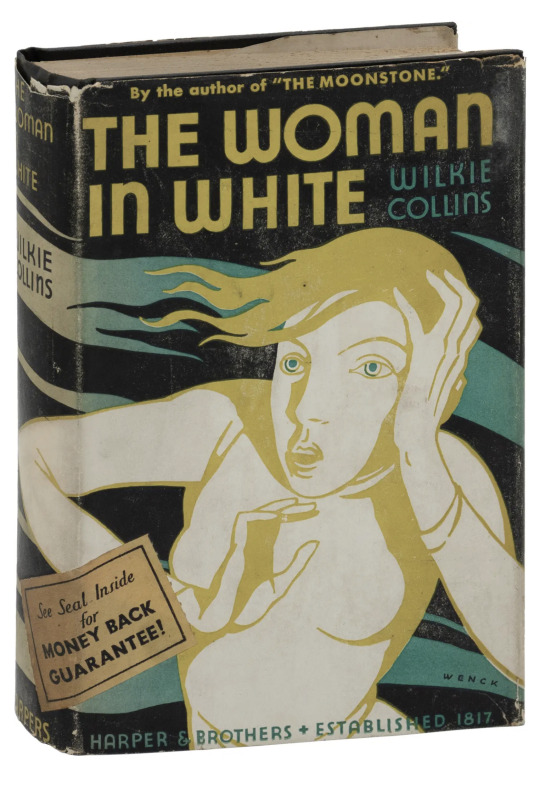

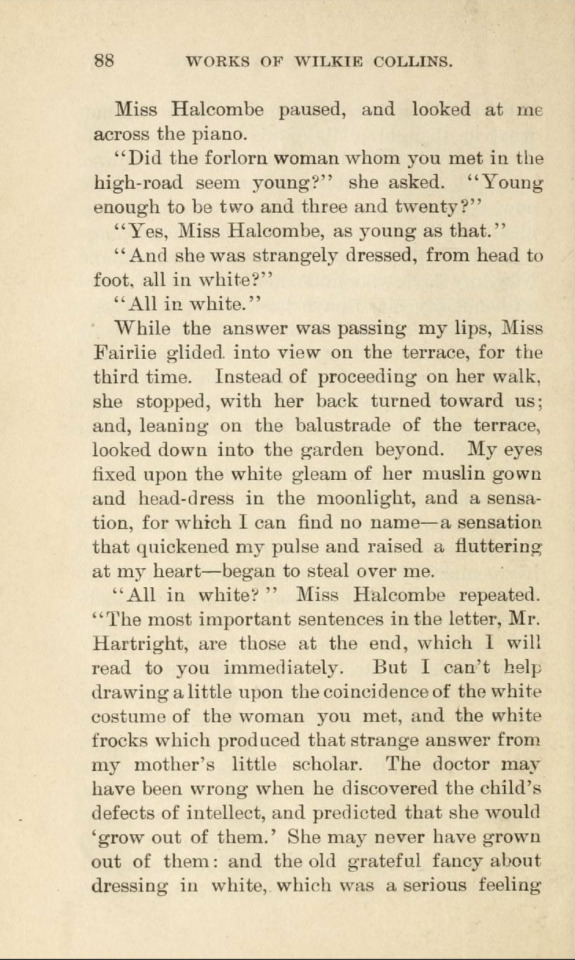
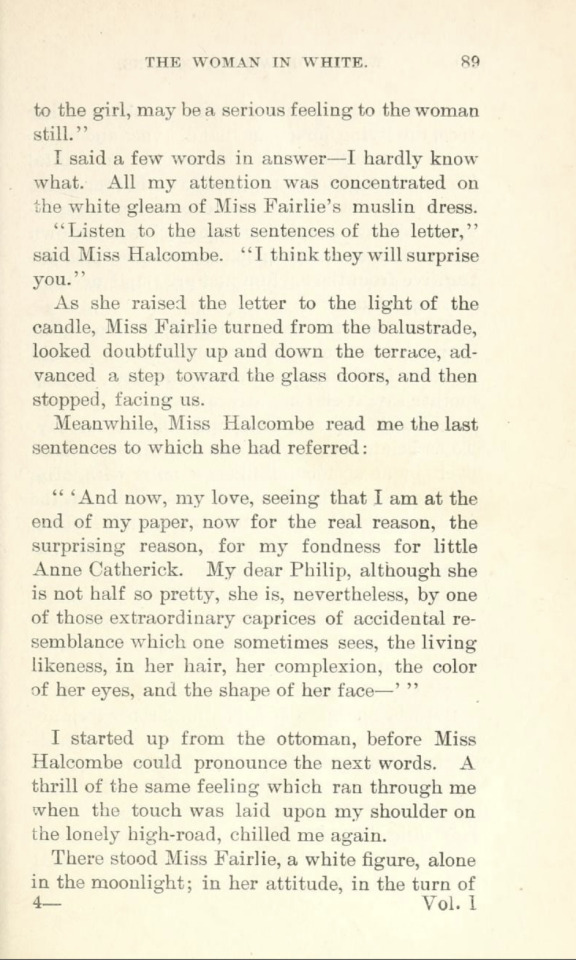
The Woman In White, a novel by Wilkie Collins (1824-1889). (New York: Harper and Brothers, 1932. First Edition.)
#novel#fiction#literature#British novel#British fiction#British literature#classics#mystery#gothic#horror#19th century#Victorian#historical fiction#The Woman In White#Wilkie Collins#white clothing#white dress#white attire#dressed in white#clothed in white
8 notes
·
View notes
Text


If I had a nickel for every time a man named John that was in the military during the early 19th century ended up being my favourite character in the series I would have 2 nickels, which isn't a lot but it's weird that it happened twice.
Do you think they fought each other... <3
(In case it isn't clear those 2 men are John Granby & John Bishop from tmnt 2003)
#HOWEVER! Only one of those men was abducted by aliens and given super strength and immortality#Sorry I just think it's really funny.#when I was watching the episode with my bestie I saw the year 1815 pop up on screen and went !!!! omg!!!#and then realised it was Bishop being shown and was Even More excited because!! omg hes my fave!! in 19th century military attire!!#birds-chirps#I need 2 draw Bishop in his uniform lol
5 notes
·
View notes
Text
Woke up half delirious the other night thinking “I wish I had a wife whose wrist I could kiss the inside of in public like lovers do”
#fully possessed by a Victorian#I was picturing us in Victorian attire too#but I think I was in men’s wear?#I’m sure there’s a lot to unpack there#but we don’t have time for that#victorian#19th century#cottagecore-raccoon
6 notes
·
View notes
Text
thinking about the infantiliztation and/or formalization of 19th-century women's clothing to modern audiences
like
our entire reference point for "wearing long skirts and outfits with decoration like lace, embroidery, appliques, etc." is either formalwear or fictional characters in children's media like Disney princesses. women's clothing is just so radically different now- not that those elements don't exist, but they're much less common in everyday clothing than they once were. some form of simple trousers and an equally simple top are de rigeur for everyday attire, and anything else is Fancy
combined with the fact- which is true! -that a lot of what survives to end up in big museums belonged to wealthy people, this ends up in wild assumptions like "basically our entire idea of what the Victorians dressed like is just Rich People Clothes really"
which has led to the eternal cry of "but what did NORMAL people wear?!?!?!" that will not be satisfied with real examples of middle or even working-class everyday clothing because it still looks too "fancy" to modern eyes
not Victorian, but a great example of this is what Abby Cox wore to portray a milliner (hatmaker) in Colonial Williamsburg. a working, middle-class woman:

(ignore the facial expression there)
this is the exact outfit she sported in a video that apparently got responses like "but that's just what rich women wore!" and it is, in fact, everyday attire for a working person. a person who worked in the fashion industry, it's true, but still
I had someone ask me about how to find examples of casual Victorian clothing because they were at their wits' end trying to research it. and I had to tell them that...what they were looking at WAS casual. in the sense of Clothing For Everyday Wear That's Not Especially Formal. there's nothing inherently formal, or exclusive to the wealthy, about a matched bodice-and-skirt dress, instep-length, with some trim. or even a trimmed blouse and skirt. obviously women working the absolute hardest outdoor, physical jobs might have adopted occupational trousers or similar, but we don't all dress like construction or farm workers all the time nowadays. why would they have back then?

Laundresses, probably 1850s or early 60s. Note that I can STILL date the picture based on their outfits and hair, and these are the furthest things from wealthy socialites.

Maid scrubbing steps, probably 1870s or 1880s. Note pleated trim on her skirt and what appears to be a peplum at the back of her bodice.
also, not all working women worked physical jobs any more than we do today. here is a teacher around the turn of the 20th century:
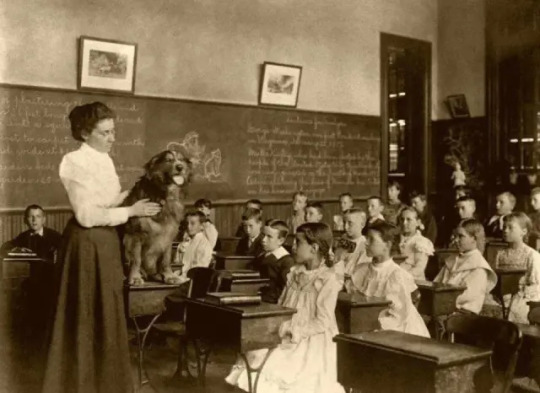
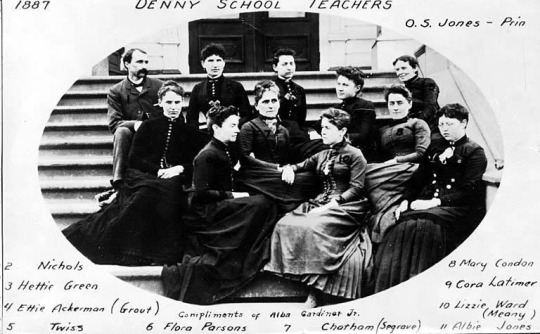
Teachers, 1887

"Breton Seamstresses," 1845, by Jules Trayer
were there differences in quality, type and quantity of trim, fit, etc? obviously. but some people are convinced that the basic outfit format can't POSSIBLY have been something ordinary women wore, because it looks formal and/or princess-y in a modern context
7K notes
·
View notes
Text
19th Century Grady Striped Men Trouser
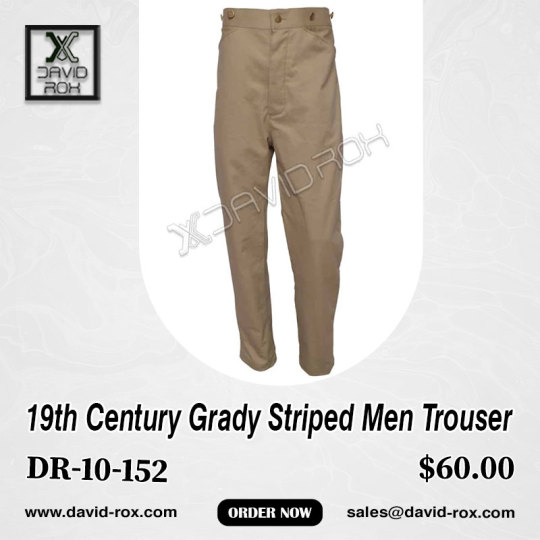
The 19th Century Grady Striped Men Trouser is a timeless garment that harkens back to the distinguished fashion of the Victorian era. Crafted with meticulous attention to detail and superior craftsmanship, these trousers embody the elegance and sophistication of the 1800s.
Made from high-quality wool or cotton fabric, the trousers feature a classic pinstripe pattern that adds a touch of refinement to any ensemble. The stripes, typically in subtle earth tones or rich jewel tones, are woven into the fabric with precision, creating a sleek and polished appearance.
The trousers boast a comfortable yet tailored fit, with a high waist and straight legs that flatter the silhouette. Details such as button closures, belt loops, and pockets are thoughtfully incorporated, adding both functionality and charm to the design.
These trousers were favored by gentlemen of the 19th century for their versatility and timeless appeal. Whether worn as part of a formal ensemble for a sophisticated soirée or paired with a more casual shirt for everyday wear, the Grady Striped Men Trouser exudes an air of refinement and sophistication that is sure to make a statement.
#19th Century Fashion#Victorian Style#Vintage Clothing#Men's Trousers#Pinstripe#Historical Fashion#Classic Style#Gentleman's Attire#Tailored Fashion#Vintage Men's Fashion#Fashion History#Historical Costume#Tumblr Tags
0 notes
Text



Green velvet court dress, ca. 1888, Russian.
By Charles Frederick Worth.
Indianapolis Museum of Art at Newfields.
#Indianapolis museum of art at Newfields#green#velvet#court dress#court attire#1880s#1888#1880s Russia#Russian#extant garments#womenswear#dress#silk#19th century#1880s dress#1880s court#1880s extant garment#charles frederick worth#house of worth
174 notes
·
View notes
Text

In a Japanese Garden
Artist: Harry Humphrey Moore (American, 1844-1926)
Date: 1888
Medium: Oil on canvas
Collection: North Carolina Museum of Art, Raleigh, North Carolina, United States
#painting#japanese garden#oil on canvas#women#baby#japanese attire#pond#japanese architecture#american painter#trees#swans#foliage#american art#artwork#fine art#oil painting#harry humphrey moore#19th century painting#north carolina museum of art#oriental scene
23 notes
·
View notes
Text
Béraud's Ballroom Paintings and the Dresses Inspired by Them
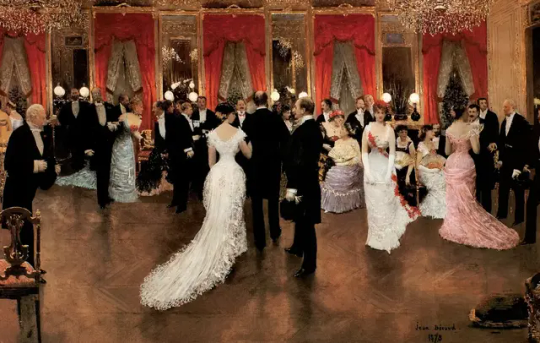
Jean Béraud (French, 1849-1935) • Une Soirée • 1878 • Musée d’Orsay, Paris, France. (Detail)
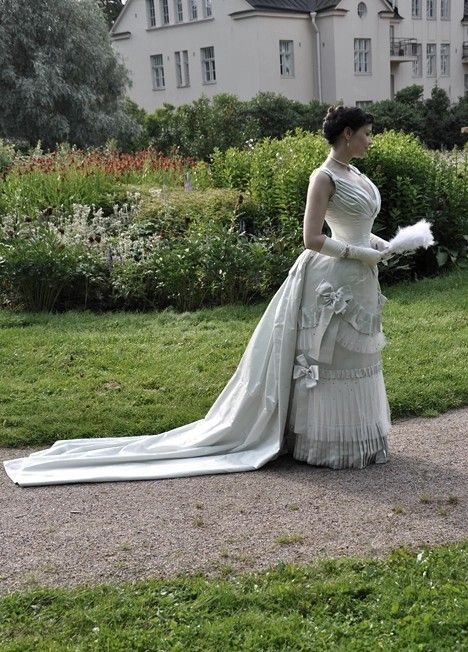
credit: Before the Automobile
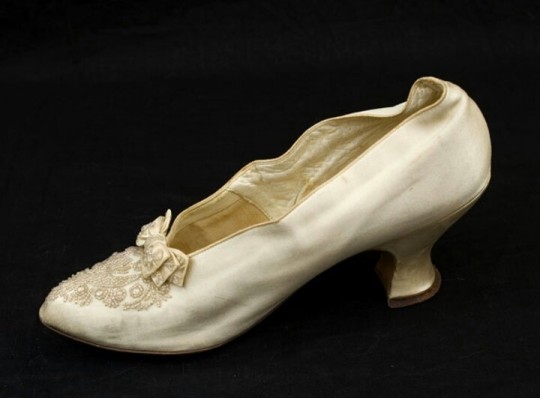

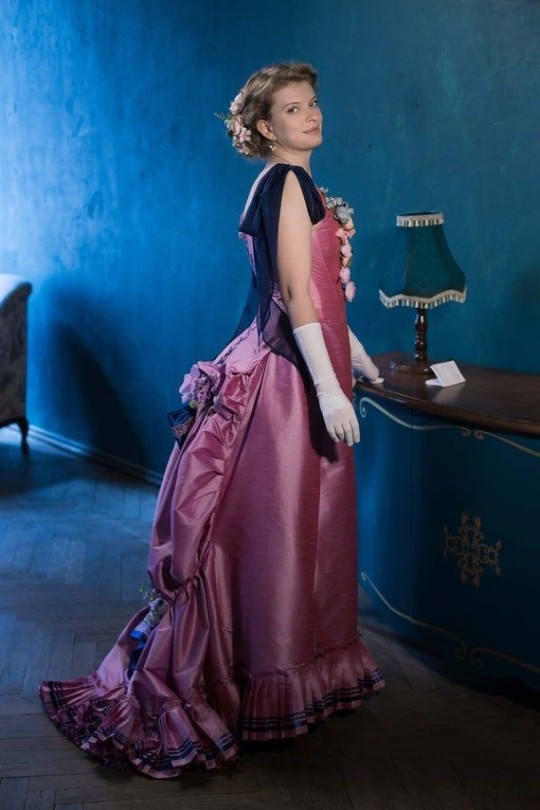

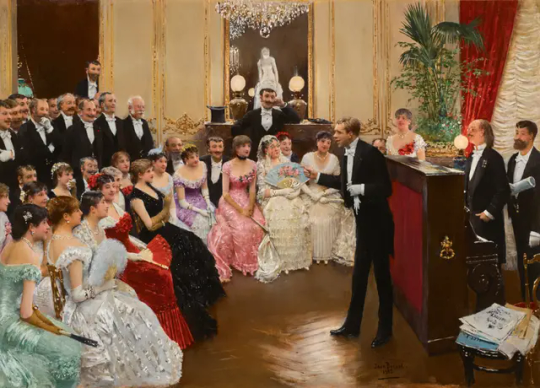
Jean Béraud • Le Monologue • c. 1880
I concentrated on the pink, red, and black dresses. The best existing real dresses I could find are below. I also chose fans that would compliment those dresses.
I think I would choose the black dress below, to wear to the lecture or performance that Béraud painted.
Which dress would you choose?
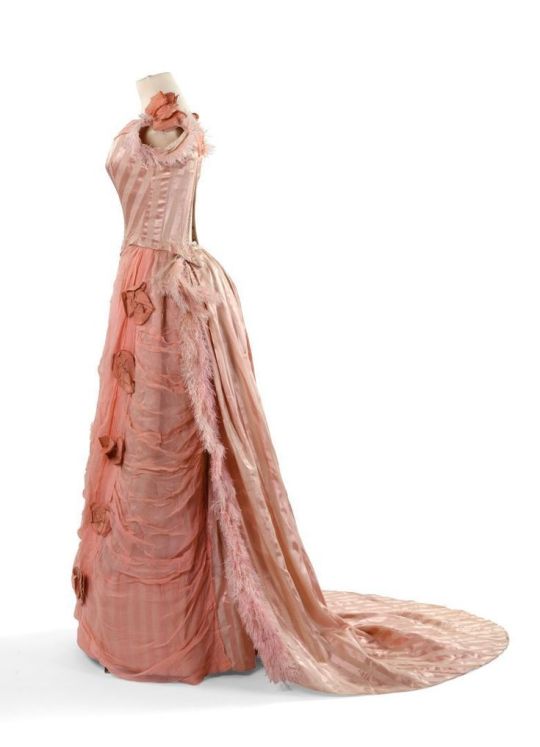
c. 1888

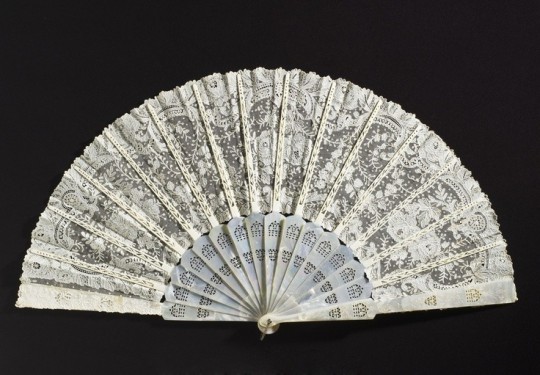


Left: Replica from a style of c. 1880s
Right: Ball gown • Designer Madame Elise Britishca • 1875 • Metropolitan Museum of Art Costume Institute
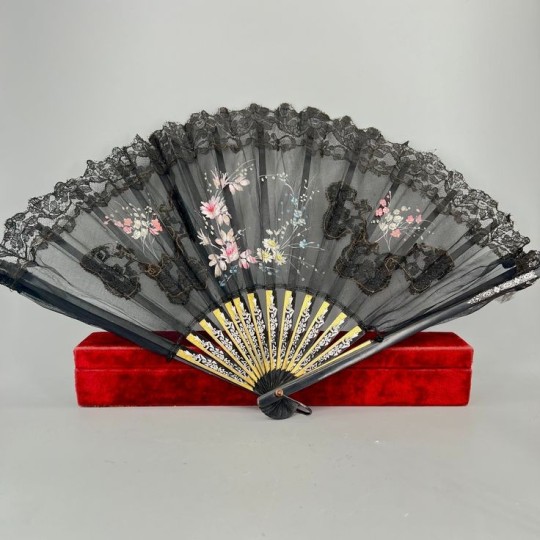
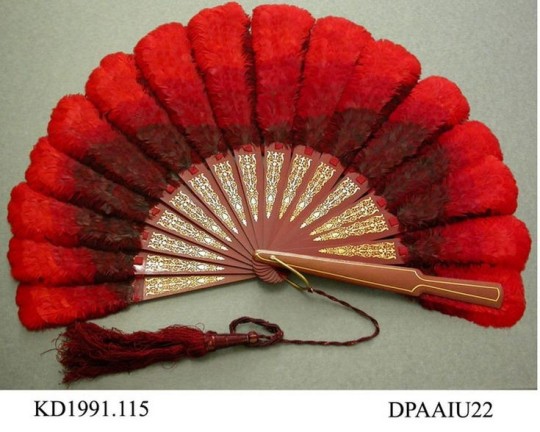
#jean béraud#french artist#fine art#genre painting#art history#painting#dress recreation#art & fashion blog#fashion history#victorian fashion#19th century european art#evening attire#hand fans#19th century french fashion#dresses in paintings#oil painting
22 notes
·
View notes
Text

Portrait of Doña Isabel de Porcel
Artist: Francisco Goya (Spanish, 1746–1828)
Date: c. 1805
Medium: Oil on Canvas
Collection: The National Gallery, London, United Kingdom
Doña Isabel de Porcel
The portrait depicts Isabel Lobo Velasco de Porcel, who was born at Ronda around 1780 and was the second wife of Antonio Porcel. Isabel's husband was 25 years older than she; they met when she was 20 years old. Antonio Porcel was a liberal and associate of Manuel Godoy, Prince of Peace, who was a friend of Gaspar Melchor de Jovellanos, who in turn brought him in contact with Goya, who lived nearby; the painting is said to have been a gift from the artist in return for hospitality. A Goya portrait of Antonio Porcel, though much larger and so not a matching piece, was lost in a fire when the Jockey Club in Buenos Aires was destroyed in a riot in 1953.
The half-length portrait depicts a young woman dressed in typical Spanish attire, a white shirt and a black mantilla. In spite of her "maja" attire, the richness of the textiles and her ladylike appearance give the picture an aristocratic elegance; at this time wealthy Spanish "people of fashion" often wore the styles of lower class urban dandies and their female equivalents, as seen in Goya's famous clothed version of La Maja.
#portrait#female#isabel de porcel#spanish culture#oil on canvas#painting#francisco goya#spanish painter#woman#half length#spanish attire#black mantilla#white shirt#spanish fashion#19th century painting#spanish art#european art#seated#black lace veil#the national gallery london
15 notes
·
View notes